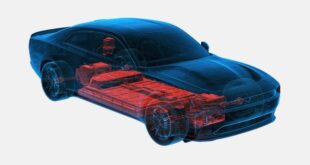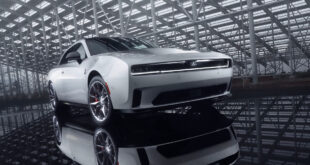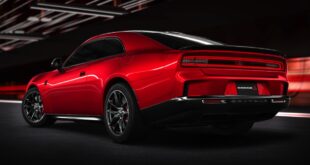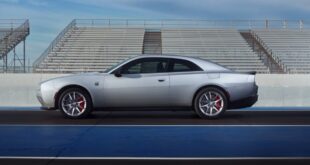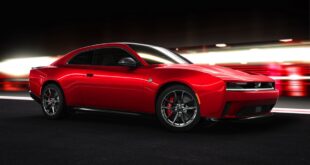Rear-wheel-drive muscle cars hate winter, but the AWD Dodge Charger Daytona was built for it.
Read More »Dodge Will Still Sell You a HEMI, Just Not in a Car
Dodge Direct Connection launches Hellephant A30 426 and Drag Pak 354 Supercharged Crate HEMI® engine blocks, announces new 6.2L supercharger kits.
Read More »Stellantis to Test Solid-State Batteries in Dodge Charger Daytona EVs
Stellantis is incorporating Factorial’s solid-state batteries into a demonstration fleet of Dodge Charger Daytona vehicles based on the STLA Large platform.
Read More »Dodge Enters Nitrocross Series with 1000+HP Dodge Hornet R/T FC1-X Electric Rally Car
Dodge is entering the 2024-2025 Nitrocross Series with new Dodge Hornet R/T FC1-X electric-powered cars competing in the Group E class.
Read More »All-Electric Dodge Charger Daytona Is a ‘Better, Faster’ Muscle Car, Says CEO
The new all-electric Charger is a “better, faster” version of the classic muscle car, at least according to Dodge’s new CEO, Matt McAlear.
Read More »Not Cheap: 670HP Electric Dodge Charger Daytona Scat Pack Starts at $75,185
With production set to begin soon, Dodge’s Charger Daytona EV is charging into the future with steeper prices.
Read More »Dodge Delays Electric Charger Daytona Launch by 90 Days Due to Electrical Issues
Due to glitches in the testing process, Dodge's Charger Daytona EV won't hit the streets this summer. Here's what went wrong.
Read More »Dodge Charger Daytona Takes the Lead: The End of an Era for Challenger?
The iconic Dodge Challenger, a car representing American muscle since the early 1970s, will not be making a comeback soon.
Read More »Dodge Charger With 550HP Twin-Turbo Inline-6 Is Coming Soon — No Hemi, Though
Dubbed the "Sixpack," these ICE versions of the 2024 Dodge Charger are ready to give their EV counterparts a run for their money.
Read More »2024 Dodge Charger Daytona: Introducing The World’s First Electric Muscle Car
The all-electric 2024 Dodge Charger Daytona delivers up to 670 horsepower and is expected to reach 0-60 mph in 3.3 seconds.
Read More »



